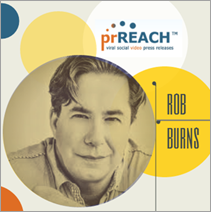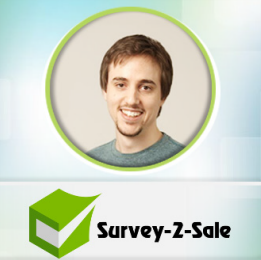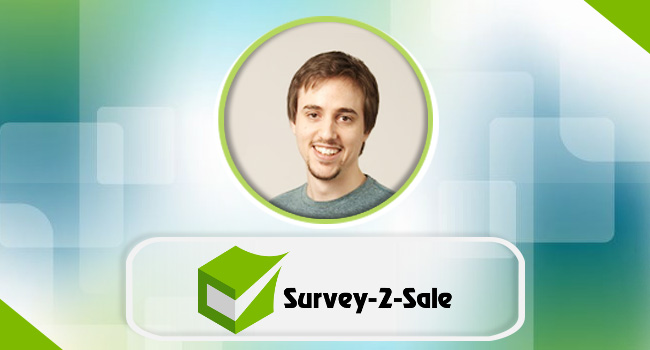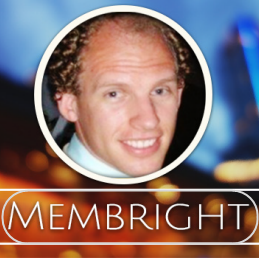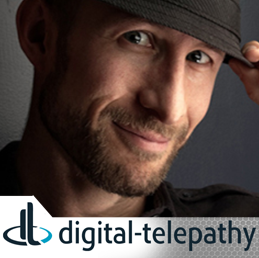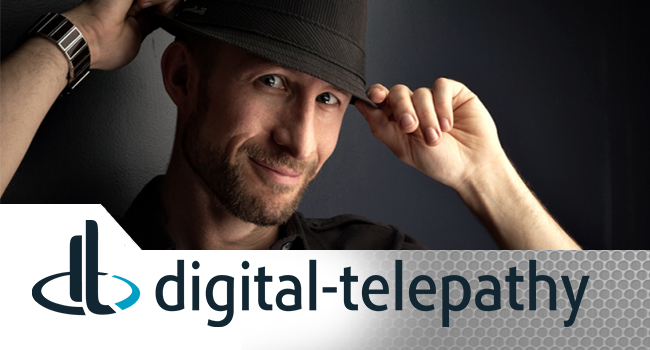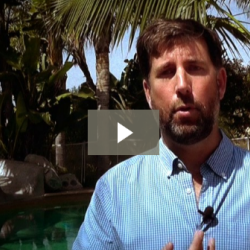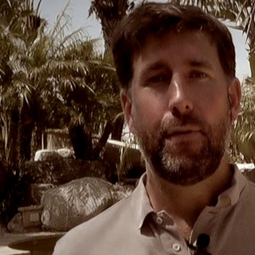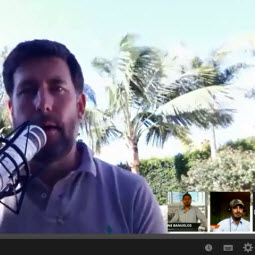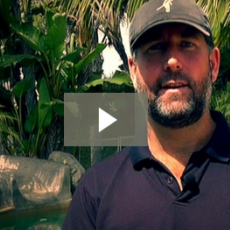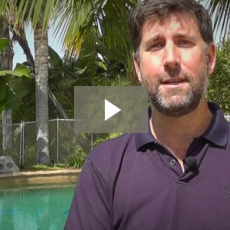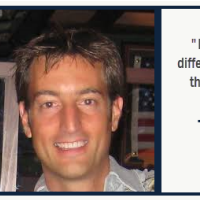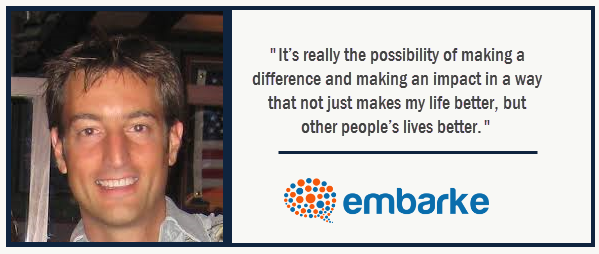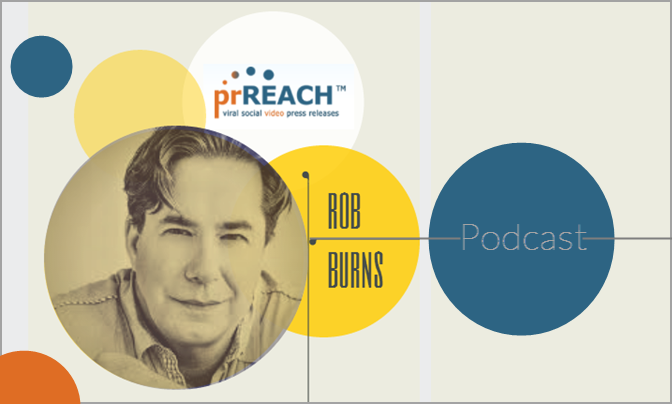
Rob Burns is the founder and CEO of prReach a press release company that has some unique services that no one else is currently offering. They have a huge social media component, a video news release, and much more. Having been in internet marketing and SEO for 14 years, Rob knew exactly what this industry needed and has delivered.
Podcast: Play in new window | Download
Tweetables
We actually have a video press release.
I wouldn’t put all my eggs in the SEO basket.
When you write a press release it really needs to engage the reader or the journalist.
Don’t base you business on a tactic base it on a strategy.
Today's Podcast Highlights
[03.20 - I wanted something that would actually be a real business.]
[04.25 - With press releases, I think a lot of the technology is just so embedded, it’s so old that it’s really hard for some of the other companies to really be flexible and really grow with how the internet has changed things.]
[05.01 - A couple of things that separated us that makes us a little bit different is we have a huge social media component.]
[05.50 - We also have, which is completely different than every press release company, is we actually have a video press release.]
[06.48 - People also take those videos and embed them on their website so it adds credibility to whatever business you might have.]
[07.54 - There’s one PR who’s name I won't mention...]
[08.37 - I wouldn’t put all my eggs in the SEO basket.]
[11.24 - People would always write copy for search engines and it just didn’t convert.]
[12.27 - Everything eventually changes and businesses change and industries change especially when you’re based on these little microtype businesses that could make a lot of money in the beginning but they always disappear.]
[13.41 - I was relying heavily on another company and another source then I could have lost my whole business.]
[14.43 - Biggest questions is how to write a press release.]
[15.10 - There’s something called news jacking.]
[16.36 - If you have a counterpoint or something like that, that’s a really good way to get actual hits from that.]
[20.09 - When you write a press release it really needs to engage the reader or the journalist.]
[21.07 - I say probably 70% of your press release is your title and your hook because that’s what is going to show online.]
[22.23 - If you just have that little bit of an angle that relates, that’s something that’s really newsworthy then you’ve just got a ton of free traffic and a ton of free people that are interested in the same thing that you’re selling.]
[24.51 - We don’t charge if you want to add your own video.]
[26.24 - We do have tier one syndication which is pretty hard to get.]
[27.01 - Look how articles and stories are written and pretty much just write their story for them.]
[28.51 - We get sometimes 3000 to 6000 other sites embedding those press releases and linking back to your site.]
[30.36 - I’ve kind of actually thinned down as far as people I follow just because I just I’m still subject to entrepreneur ADHD.]
[32.05 - Don’t base you business on a tactic base it on a strategy.]
[32.46 - I don’t know everything and I’m always constantly learning but I’m at the point now where I’m dedicating myself to implementing everything I’ve learned.]
Disruptware is building the largest community of software entrepreneurs on the planet. Make sure you are on the list.
Full Transcript
Paul: On today’s show we’ve got Robert Burns who is the founder and CEO of a company called prREACH. prREACH is a highly successful online press release company. Not only do they publish and syndicate press releases to tier one syndication networks. So in other words those like Associated Press. What they’ve also done is added more of a twist to each press release so that it gets the social mention and the social views as well.
Coupled with that, they actually create a news anchor style video release of your press release. All that is captured into one amazing package and it’s something that you can take advantage of and get some free traffic to your site especially at launch time but not only that ongoing whenever a new feature comes out or if you have some sort of angle that you want to promote then that’s the time to publish a press release and get some traffic. Without further adieu let’s get Rob onto the show.
Rob: Hey, how are you doing?
Paul: I’m great. Thanks. I really appreciate you coming on board. I really wanted to get you on the show because as you know disruptware is all about software and building really awesome software apps and SaaS products. The biggest issue with a lot of my customers and followers of the podcast is obviously getting traffic and converting that traffic and something you are an expert in especially from a free traffic perspective. prREACH is very much a groundbreaking and a press release service, I called it 'PR Web On Steroids' and that’s pretty much what it is, right? Give me your view, your elevator pitch of what it is.
Rob: Sure. We decided to launch prREACH really what I was looking for was a vulnerability in a market. I wanted to go out there and I wanted to look at something that would not just be … I’ve been doing internet marketing and SEO probably for the last 12 or 14 years. You see a lot of folks where they’ll just come out with this product or this software thing and it's a bit gimmicky and it’s just really more of a hustle. They’ll make a bunch of money and then it either doesn’t work or whatever or the industry changes and then it’s just gone and they disappear.
I wanted something that would actually be a real business but there’s kind of a vulnerability in the market where maybe they’ve just been static for too long which actually was the case with the PR companies and that’s really what prompted me to launch prREACH. I look at PR as far as online digital press releases really kind of like publishing where publishers for the longest time I mean they had a 17th century marketing model where they would just dictate to the customers how they would be published. With the advent of the internet and how things have really grown and evolved, now people choose how they’re going to market themselves and how they’re going to market their products and their books. Really the publishing industry just got completely passed by.
Just like the record industry the same thing where they had this model where they said this is how things are going to be done and they didn’t really want to change with times and they just disappeared. With press releases, I think a lot of the technology is just so embedded, it’s so old that it’s really hard for some of the other companies to really be flexible and really grow with how the internet has changed things. When I came out with prREACH we just looked at so … what else can we add. What can we make this so that this is a 21st century product and how can we build our platform so that it’s flexible enough if things don’t work then we can get rid of them, and if we need to add new things that we can and that was really my whole game plan behind prREACH and that’s what we did.
A couple of things that separated us that makes us a little bit different is we have a huge social media component where we actually … when you publish not only does it go out to tier one syndication which means like Associated Press and LexisNexis and Reuters and all the things that the big companies send to. We also have our own social media network that the press releases will actually go out to which is huge because 90% of the journalists actually use things like Twitter believe it or not when they’re doing their news. People, journalists, will follow Twitter to see what’s going on.
A lot of the third world countries if there’s something happening there then usually it’s going to pop up on Twitter before anywhere else or a YouTube video or something like that. We have this huge social media component and then we also which is completely different than every press release company is we actually have a video press release. We have a newsroom with an anchor person that will actually read off your press release and then embed that video on your press release. Every press release company in the world when you send out a press release, it’s basically you talking about your stuff where with ours we actually have somebody else that is talking about you. It gives you that much more credibility. Psychologically, it gives you a bit of an advantage.
Paul: It’s just like someone reading the news.
Rob: We don’t try to be fake news. We don’t try to fake somebody on – fake Walter Cronkite or something in there, but it is news. We call it a video news release. It’s just a news person reading it. People also take those videos and embed them on their website so it adds credibility to whatever business you might have.
Paul: That’s brilliant. Basically, let’s take myself I get a press release. I come to you with that release and you not only publish that and push that out to the big syndicated news networks or like Associated Press and everything like that but you also push that out all to the social media world and then you also create the video so you got the real media view of your news as well. Then you’ve got potentially like 3 different avenues for traffic and then obviously whatever that might pick up and I’m guessing links and stuff like that for SEO benefit as well.
Rob: Yeah. We don’t try … I would say we’re probably more SEO than most of the PR companies out there but I don’t ever really promote that. There’s one PR who’s name I won't mention PRWeb who went on and said, “Hey we’re the SEO press release company” and instantly Google said, “No you’re not” and actually just disappeared them from the internet for a couple of weeks just to prove that fact.
Paul: That’s power, isn’t it? I mean I’ve seen some recent news…
Rob: That’s completely vulnerable. I believe there’s absolutely huge SEO benefit in there I just don’t really outwardly promote it as much as most folks would just because I’m in it for the long run. SEO is one of the benefits but it’s not the only benefit. I wouldn’t put all my eggs in the SEO basket.
Paul: Just take one step back a second on that point. That’s power! I saw a recent news article about Google again being too monopolistic whether deliberate or not but the fact is they are. They are such a giant and at the push of a button they could just switch off your business from a traffic perspective just for the hell of it. I mean admittedly obviously from their perspective they’re argument would be that you're just playing the system but in PRWeb’s case they’ve always known that press releases attract links and stuff like that and they do have big SEO benefits. To suddenly turn around to that company and just say, “Hey but no stop doing that and here’s your punishment for a couple of weeks.”
Rob: Right. They made them scramble around to be more Google compliant. One of the things that really upset a lot of folks was they just started deleting press releases that Google said, “Oh these press releases shouldn’t be on this site” and they just deleted them. These were ones that people paid for and they just didn’t get reimbursed and so there was really some unhappy folks going on with that. Again to me it’s just you really need to look at the bigger picture. That’s a 35 million dollar company and they’re doing a silly biz-op play and they got bit for it. That’s what I don’t want to do.
Paul: There's like two things to that, there’s the fact is that one thing I say to people is that never build a business that’s reliant on another business. I see a lot of people building Facebook communities which is great and there’s nothing wrong with that but if you’re building that as your core business, so in other words if you’re selling access to your Facebook community and you’re really working on that as your primary business then that’s a mistake because your whole business is reliant on the Facebook platform being available and your account being open and stuff like that.
It’s the same with Google Plus communities and everything else. If you’re going to build anything make sure it’s on your own property, on your own site, on your own servers. And secondly, especially when it comes to accounts like Google never do anything for SEO value or you do it for traffic value and if you focus on the traffic and writing content for real readers and real visits then the SEO benefits just kind of come automatically, right?
Rob: Absolutely. That’s one of the things that was really even when I was in the thick of it as far as doing SEO work, people would always write copy for search engines and it just didn’t convert. It wasn’t engaging and if people went to the site then it’s really unless they’re just doing some kind of cloaking or something where there’s copy written for search engines and there’s copy written for readers, it was just a terrible strategy. I’ve always said your clients and your content are first and then anything around that because that’s your strategy. Anything around that is a tactic. I think the big challenge is most folks especially in the internet marketing world is that they just don’t realize what a big wide world it is out there.
They focus on their one little thing, their one little tactic and they make a business out of it and then when that changes and then they’re just decimated and then they have to start all over again. It’s just kind of a tough thing. Everything is vulnerable. Everything eventually changes and businesses change and industries change especially when you’re based on these little microtype businesses that could make a lot of money in the beginning but they always disappear. Now hang outs are the big thing and I use hang outs and I leverage them to death but I would not build my business on a hang out.
Just like with prREACH, we in the beginning actually our videos were YouTube videos. I really started kind of getting that feeling that this is kind of a vulnerability because if YouTube decides to who knows maybe they go to a paid model or they do some kind of crazy thing or they change their terms or whatever then my whole business is gone. I actually started migrating over to other platforms that I own where I actually own the videos and it was a good thing because there was some guy that was an affiliate marketer that was using my press releases and he started view bot spamming my YouTube channel so that his videos would rank and eventually got that channel banned.
It’s a perfect example of where I could have just … because I was relying heavily on another company and another source then I could have lost my whole business but by then I had already had everything … I just flipped a switch and I already had them on other channels and it took me 30 minutes to move everything over because I was already prepared for it.
Paul: Rob, let me ask you like I got all these people on my tribe who are launching software products or scaling or whatever and so they are going to be thinking right now I need to get a press release out there. I need to get my news out there. Should they just do one when they launch? Should they do one a month? What sort of angles can people take when they’re putting out press releases?
Rob: That’s a good question. That’s probably one of my biggest questions. Actually if you go to my site, when you go to blog section there’s a little pop up. You can opt in and get a … it’s '108 Reasons To Write A Press Release' because one of my biggest questions is … one, is how to write a press release and the other is what reasons do I have to write a press release. With software folks, there’s a lot. Some angles you might be able to take is of course there’s a launch so you can announce the launch. If it’s some kind of disruptive technology that might change the industry then you can talk about that.
You can also look … there’s something … it’s called news jacking where you can actually go to Google news and type in some phrases or sentences that are related to your product or your industry or your business and you can see what’s going on in the news. So then you can actually do press releases where you’re the expert commenting on that particular thing. Maybe something happened with Oracle or some database software that you might be tied into that’s tied into your software something like that, SQL or whatever and there’s some kind of industry change and you can say now you can be an industry expert and quote on that.
Paul: Depending obviously whether your targeting that demographic but you’re right. That’s a great point. You kind of look at what your market might be reading and what’s newsworthy and then you kind of piggyback. You find something that’s really, really trending and then piggyback on that and sort of tie into that story. I guess also because other journalists are monitoring that as well. So whatever the buzz word or hash tag is they’re monitoring that so you can kind of piggyback on that and see if you get a mention within the press.
Rob: Exactly. Maybe there’s a journalist that wrote something that’s related to your industry and then you write a press release that’s commenting on that. You can send it to that journalist and that journalist might interview you. If you have a counterpoint or something like that, that’s a really good way to get actual hits from that. A lot of people think too that you just put a press release out there and you’re just instantly going to … a journalist is just going to instantly call you and a lot of times you really need to kind of track down the people that are the thought leaders in your industry and write a press release and direct it towards them if you’re looking to get on the news or the media.
It’s really not that hard. My wife, she just got on the news, I think it's a 140 different markets we send to and actually we just sent out a press release and they just hit her up. She does so much news and she’s in the media so much and she has a huge media room so that they basically can do a little bit of research on her and say “Oh she’s been on Good Morning America and Oprah and all that kind of stuff.” She knows what she’s doing. It’s a lot easier for her to do that. But really anybody can do that. Any business, you think, “Oh my business doesn’t … it’s not newsworthy or it’s not related.” I mean my wife is an image consultant, a professional organizer. When she decided she wanted to do that, I didn’t even know what that was.
I was doing SEO so nobody was even looking for that. Now it’s different because there’s TV shows about it and all that good kind of stuff. It’s a lot more visible but at the time we actually kind of created a whole market around PR. We would do press releases like we would pitch different news sources like 'Spring Cleaning Your Garage' or 'Getting Organized For Back To School' or 'How To Change Your Image For Your New Job Interview' and things like that. That got her on the news which got her a lot of exposure, which got her a lot of traffic. Now she’s pretty much … that led to more nationally syndicated interviews which led to her actually being keynote speakers getting like $7000 to $10,000 keynote gigs speaking for Intuit and Hewlett Packard things like that.
Paul: Another thing because we go back a couple of years and we’ve met up a couple of times. I remember the last chat that we had and this kind of goes to my next question but we were talking about Upworthy and you'd mentioned that as a site to look at because they get extreme viral traffic and they use a lot of tricks around the headlines and things like that. Are there any particular angles that you would take or any advice as to how people could find an angle to get their press release at least read? The worst thing that anyone wants to do is just to say right brand name is now launched. No one is interested because they’re seeing that 500 times a day.
Rob: One of the biggest mistakes folks do is they write a press release. They’re in their own microcosm in their own little world and they're writing this press release which they think is something brilliant about them but nobody really cares honestly. When you write a press release it really needs to engage the reader or the journalist. It needs to touch on something that is a vested interest for the reader or the journalist where most people write a press release based on whatever interest the person submitting the release has. Does that make sense?
Paul: Yeah absolutely.
Rob: It’s not about you basically. It’s about the reader and it’s about the journalist. If you write for the reader and write for the journalist and that’s what Upworthy is really good at because their titles are just crazy engaging and there’s a PDF out there where they actually did a presentation like how do we write our titles. They usually write on average I think 22 or 27 different versions of that title before they pick the one and it’s always something that’s a hook. It hooks you in and brings you in. I say probably 70% of your press release is your title and your hook because that’s what is going to show online. That’s what people are going to see first and if that’s not engaging, if it’s like 'Dave’s Hotdog Stand Now Carries Mustard', nobody is going to care. If they tied it into GMO free something or other, some kind of angle that is newsworthy then that’s going to make a big difference.
Paul: Something really stupid like GMO mustard makes your hair go green.
Rob: Exactly.
Paul: Someone is going to read that, right?
Rob: Yeah. It’s got to be true. Actually that one probably is true. That’s the angle that you want to do is you want to look at a much, much bigger picture and that’s how people, the smaller business you’d be surprised because people in news they don’t have enough news for their cycle that’s why you just see the same stuff over and over again. They just can't find enough stories and enough interesting things. If you just have that little bit of an angle that relates, that’s something that’s really newsworthy then you’ve just got a ton of free traffic and a ton of free people that are interested in the same thing that you’re selling.
Paul: The newspaper or the media wants that as well. They want the traffic for their sites so they have to publish interesting stuff.
Rob: When you write about a press release think about how can I drive traffic to these people. That’s what they want. That’s exactly right. They’re looking for things that is going to drive traffic to their site or their channel or whatever media source or outlet that they are and if you can provide that for them then you pretty much own them.
Paul: So I need to write a press release. I need to perhaps do some searching, find out what’s trending I guess on Google trends, maybe look at Upworthy to try and get an idea of what sort of titles to or what sort of angles to take to make my title interesting.
Rob: Goggle news is another good source. Type in different phrases related to your business and see what’s popular. Look at those titles. Digg, Reddit, StumbleUpon. Look at the top trending titles related to your business and industry because if those titles aren’t good, they’re not going to rise to the top just the way that those particular social media sources are structured then it’s just not going to happen so that’s another one. Even Twitter trending topics. Are any of your topics related to whatever the top trends are and can you tie a story into those trends.
Paul: Then what’s the best thing then? Should I write my release and then sign up for one of yours and then submit it? What’s the best approach?
Rob: It’s pretty simple. The way we’re set up is you just sign up and we have training that will just walk you through. Some unique things that we have that other press release companies don’t have, you can … we don’t charge if you want to add your own video. It’ll actually be … if you want to have a YouTube, it’s actually embedded and you can add different documents like PDF downloads or images, any kind of extra material that a journalist may want you can add it to your press release. The other thing too is we actually have a second section where you can write a 300 word summary for the actual anchor person that read your press release.
We found a lot of times just the way a press release is written and structured it doesn’t necessarily become the most engaging video when somebody reads it. How an anchor person or newsperson would read it is probably different than how a press release is read. There’s a separate section where you can write that so that what the anchor person reads is a lot more engaging which is great because then say you take that video, you put it on your site now that it is more engaging that increases time on page which is also a ranking factor and it hooks you in.
Paul: If I didn’t want to write the release myself, is there some service you can recommend or anything to get that?
Rob: Yeah. When you sign up there actually are some links on the thank you page that will send you to people that we … we don’t offer press release writing right now just because it’s actually kind of a conflict. We do have tier one syndication which is pretty hard to get. If we don’t put out quality press releases then we’ll get kicked out. Our editors are pretty stringent. If we offer to write a press release and then we reject it, it’s probably going to make folks upset so it’s a bit of a conflict of interest. We refer people but they’re still subject to our editorial process. Really that’s in your best interest because if it’s not a good press release you’re not going to engage anybody anyway.
Another good thing too as far as writing a press release is look at how, especially if you’re targeting certain journalists or certain markets, look how articles and stories are written and pretty much just write their story for them because a lot of journalist are so busy. If it’s well written and it’s engaging and it’s somewhat in their style whether if you’re going out for TV it’s going to be written a little bit different for TV than it is for a newspaper. If you kind of had the story already in the can where they can just take it and rewrite it a little bit then you’re going to be picked up a lot more also.
Paul: You’ve got some tips and stuff on your site at prREACH.com so people can at least get the basic structure outlined in their own head.
Rob: If you go to prREACH.com just go to our blog section and there’s a bunch of articles and training and different tips and ideas. I actually have one article on how to write a press release and I talked a lot about how we would do SEO which is pretty contrary to the way most folks do. I pretty much don’t support anchor text links anymore especially if you’re not a full time SEO and you’re not doing this all the time because everything changes so much. One of the big Panda and Penguin things that happened when they updated was an over anchor text penalty.
Paul: I guess just reading ahead or thinking ahead about what you’re probably going to say is I guess like if you do one press release with your anchor text optimized for some keyword, the syndication is so massive with your service that you could end up with hundreds and hundreds of links.
Rob: We get sometimes 3000 to 6000 other sites embedding those press releases and linking back to your site. If you’re a fairly new site and you don’t have that many links and all of a sudden you have 6000 anchor text links pointing to your site without one word then you’re pretty much going to be shut down for a while. Google with their LSI, their latent semantic indexing which is kind of a fancy scientific word for they know the shit you’re writing on your site.
Their LSI is so sophisticated that really I mean we’ve actually ranked sites that were talking about a subject related to a keyword but that keyword wasn’t actually even on that site but Google thought that it related, that it was themed close enough so I don’t think your anchor text really even matters that much. I think the quality of the content and writing about the subject matter will matter much more.
Paul: Got it. All right, we’re coming to the end of the show now but just tell me obviously you’re an entrepreneur like myself and you’ve come from … I know you’ve started off in PR and you’ve gone through a whole world of SEO and free traffic and now you have your own press release company. What do you look to drive yourself forward as an entrepreneur? Who do you follow? And any advice you can give to any of my tribe listening today who are building their own company and looking for ways to succeed, and motivation, and things like that. Anything you can offer there to help them?
Rob: Yeah. I’ve kind of actually thinned down as far as people I follow just because I just I’m still subject to entrepreneur ADHD that I’ve really just disconnected from a lot of that stuff. Books I’m reading, Trust Me, I’m Lying by Ryan Holiday is a really good one. It really talks about how the media is being manipulated and how easy it is for somebody to do. He also has one called Growth Hacker Marketing which I’m reading those side to side.
Advice, as far entrepreneurs I would say probably one of the biggest lessons for me as far as just taking things to the next level and running businesses as opposed to hustles is look at your strategies and not your tactics. For the longest time especially with SEO, I was just the tactic guy I had all these really cool crazy things that people would go, “Oh that’s brilliant. You can do this and this is what happens” and but it’s just a tactic. It’s not a long game. It’s not a big game. It’s not a business you’re building so look at the strategies. I still love the tactics but tactics are just part of a strategy and it’s implemented in there. Don’t base you business on a tactic base it on a strategy.
Paul: I think just the take away, obviously there's that, but the take away before you were just saying when you talked about entrepreneur ADD which we all suffer from is thinning out who you’re listening to. Actually you’re talking about focusing. Start unsubscribing from other people’s lists and stuff. Really just value the content that you’re reading, thin it out and that will obviously give you the freedom in your brain to focus on your core business.
Rob: There just comes a time when you have to stop looking at everybody else’s business and run your own business. For me, I don’t know everything and I’m always constantly learning but I’m at the point now where I’m dedicating myself to implementing everything I’ve learned. There will come a point where I’ll probably shift the other way and go back into my learning phase because it’s just something I love. At this point in my career and business, I just need to do stuff. There’s no book that’s ever going to teach you really how to succeed except for just actually doing it and sometimes even failing is probably …I look at it as tuition.
Every time I fail at something, I just don’t do that anymore and I’ve learned something and it may have cost me a little bit but in the long run when I’m playing in a bigger better field, then I’ve learned by that mistake so that’s one of the things. It’s pretty contrary because I know everybody else is like, “You need to absorb this.” I agree to a certain extent but I also think there comes a time when you just need to do stuff and just need to focus and get rid of all those distractions.
Paul: Brilliant. Rob, listen I really appreciate you coming on the show. For any listeners prREACH.com is the site you need to go to and there’s loads of tips and strategies on the blog that tells you all about it plus Rob’s download I think its '108 Different Ways To Write A Press Release'. So you can go and grab that at the site and create one of these really groundbreaking press releases for a hell of a lot less than any of the competition and ten times more powerful especially with the video content.
So Rob thanks very much. Really appreciate it.
Rob: Hey Paul thanks for having me.
Recommended Resources
1. prReach - click here
2. Upworthy - click here
3. Digg - click here
4. Reddit - click here
5. StumbleUpon - click here
6. Book - Trust Me, I’m Lying by Ryan Holiday - click here
7. Book - Growth Hacker Marketing by Ryan Holiday - click here
